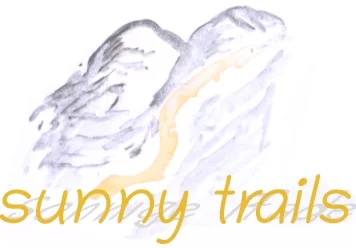
In Sukhothai (Thailand), the historic first capital of a Siamese empire, the numerous temples of this era can still be found today as a landscape of ruins. The entire complex of Old Sukhothai is one of the World Heritage Sites of Thailand.
Wat Sri Sawai in the Sukhothai Historical Park is one of the relatively well-preserved temple buildings of these ancient Siamese capital. The Khmer, whose center of settlement is in present-day Cambodia and who left behind the most famous temple city in Southeast Asia, Angkor Wat, gave Wat Sri Sawai in Sukhothai its characteristic architectural style.
Experience in the history park of Sukhothai (Thailand)
During my visit to Wat Sri Sawai, I also made a walk inside the boundary walls surrounding the temple. It was morning and I was relatively alone in the compound. When I came to a rear courtyard, I suddenly noticed a snake on a stone pedestal to my left. This moved sideways beside me slowly in my direction.
At first I was naturally curious, but also a little uncertain. Finally, I had no idea whether the snake could be dangerous for me and what it was up to. It crawled towards me, at least its path would cross mine in a few meters. I paused and kept the camera pointed at the snake. To the green color I thought at first moment nothing else than “Green Mamba” – but they do not live at all in Thailand….
The hunt of the snake begins…
Then the snake straightened up next to me for a few seconds – it raised its upper body and stretched its lambent head forward, in the direction to the corner of the small inner courtyard. Then it began to slither forward at an increasingly faster pace. I was still a little uncertain – would it attack me now? The snake’s movements became faster and faster – it reached the wall, which had a narrow ledge at a height of about 30 cm. There the snake continued its forward movement now in a speed, which I would have hardly thought possible – it was full in the hunt fever.
More in the corner of my eye I saw another movement on my right: A lizard about 40cm long was trying to escape by climbing up the side wall. But the wall had an overhanging crown at the top. The lizard failed and fell back to the wall ledge.
For a moment I could see neither lizard nor snake. In the corner of the wall, on a small concrete pedestal, stood a spotlight that was supposed to illuminate Wat Sri Sawai in the dark. Between the wall and the pedestal was a gap, in which the leaves had blown over. And there I discovered the snake again – it was curled up and from the loops of its body hind legs and a twitching tail were peeping out. The snake began to strangle the captured lizard with its muscular body.
Later, the snake’s head showed, groping searchingly between its open snares and tails. Then it opened its jaws and stretched them on its own body. The head disappeared between the front snares. Slowly the rings loosened from the body and all at once the snake’s head emerged from this embrace.
Deep in the snake’s wide-open maw was the lizard, with only hind legs and tail still hanging out. The muscles of the snake’s body worked and pushed the body of the lizard as a whole deeper and deeper into the snake. You could literally still sense the lizard’s profile in the bulges of the snake’s body. Also the hind legs of the lizard disappeared now. Soon only a short piece of the tail was hanging out of the snake’s mouth. The whole spectacle had lasted a little more than 10 minutes. The snake, which had been so agile before, was now lying rather sluggishly in the corner. Fat prey was to be digested.
A flying snake
In the evening of the eventful day, after extensive visit to the historical park of Sukhothai, I searched the Internet for the species description of the snake. It is a green ornamental tree snake or paradise tree snake (Chrysopelea paradisi), which can grow up to 1.5m long and even fly up to 20m between trees. Yes, read correctly – the snake can fly! The ornamental tree snake climbs trees and drops from branches. In doing so, it stretches its belly to a surface that also forms a hollow profile – similar to an airfoil. Thus it hovers more or less purposefully following gravity.
Advertising


